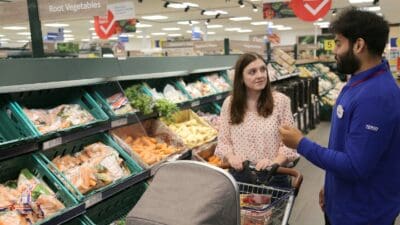The FTSE might have recovered slightly but we are still in bear market territory, so it’s interesting to see the companies that have done well. These are the five best performing shares over the last six months for the largest 350 companies listed on the London Stock Exchange.
- Greggs up 65.6%
- BTG up 59.4%
- Acacia Mining up 59.4%
- Dunelm up 38.9%
- Telecom Plus up 37.5%
The performance of the FTSE 350 index over this time was nearly -11% so these companies have done exceptionally well. Greggs (LSE:GRG) dominates the list but slightly benefits from its price being severely depressed at nearly a two-year low six months ago.
On a roll
The outlook for Greggs was bleakest in May following a profit warning which suggested the company was struggling along with the rest of the high street. However on July 31, it released its interim results reporting on a “resilient performance” with profits likely to be similar to 2017. This started the reversal of the share price decline.
Should you invest £1,000 in Greggs Plc right now?
When investing expert Mark Rogers has a stock tip, it can pay to listen. After all, the flagship Motley Fool Share Advisor newsletter he has run for nearly a decade has provided thousands of paying members with top stock recommendations from the UK and US markets. And right now, Mark thinks there are 6 standout stocks that investors should consider buying. Want to see if Greggs Plc made the list?
It achieved these positive result by moving to a ‘healthier’ food offering, which was popular in the hot weather conditions. This provided investors with some relief following the lowered profit expectations from May but it did not indicate a vast improvement in performance. Some institutional buyers clearly noticed that the selling had been overdone and there was some big buying in the run-up to the results.
In the October trading update, the company reported improved like-for-like trading, but profits still expected to be in line with lowered expectations from May. Then in November the company acknowledged that as a result of stronger like-for-like trading, profits were back on track would be ahead of expectations. This was revised upwards further in January.
Recipe for success
There are several reasons for Greggs success. Some of this was making up lost ground following the poor outlook given in May. This can be seen as the share price didn’t actually hit new highs until January even though there had been months of good news. Crucially two things helped it. Firstly, despite poor high street performance, there are still a lot of people who work in towns who don’t change their eating habits or visits to Greggs just because they’re now shopping online more. And perhaps more importantly, the company responded well to a challenging consumer backdrop. It released new healthier/vegan products that were well received by the public.
Value for money
Investors that were familiar with the company noticed that the profits reported in July meant that the profit warning in May showed only a blip in trading that affected the share price but not the long term outlook. Some big institutions obviously felt the selling was overdone as they bought heavily before the results when the price-to-earnings ratio (P/E) was around 15. Institutional buying has a big impact on the share price because it reduces share availability by hoovering up the unwanted shares in large volumes. This forces the price higher, so institutional buys are worth paying attention to.
Full-year expectations are slightly ahead of the start of the year, however the price is 14% higher than the previous all-time high. This suggests the recovery is now priced in or even overdone. The P/E is 21.5, the top end of the usual range for Greggs, os it isn’t a company that I’d be looking to buy at this time.







